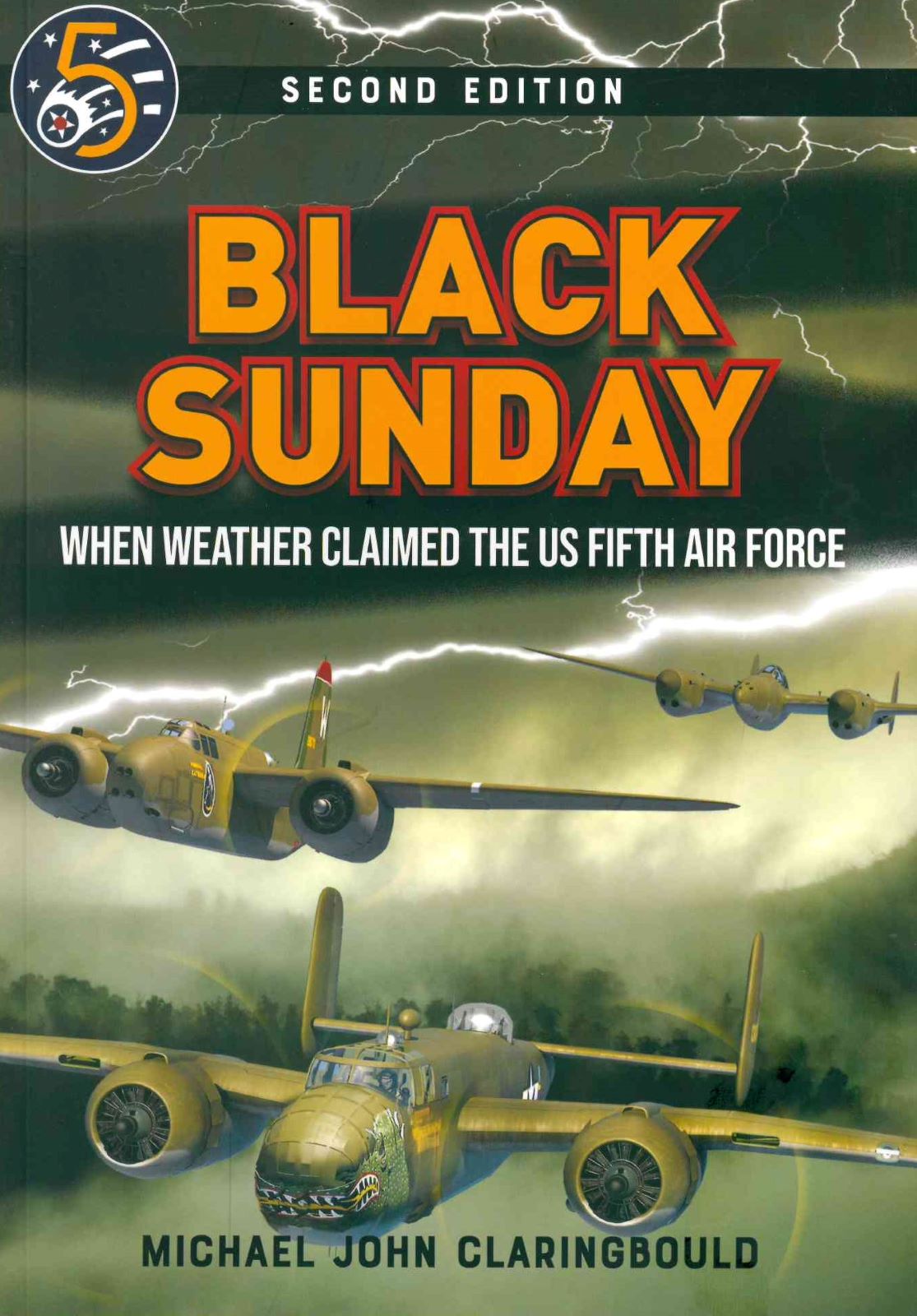Black Sunday – When Weather Claimed the US Fifth Air Force
“There were lots of ways to get killed in the Southwest Pacific and weather was one of our worst hazards.” – Lightning Pilot Leroy Ross.
Author Michael John Claringbould begins his book with the following first paragraph of the Preface,
“The day of Sunday 16 April 1944 marks the biggest non-combat loss the USAAF incurred in any theater in World War II. After a delayed morning departure more than three hundred Fifth Air Force aircraft departed to attack Japanese airfields and installations at Hollandia in Dutch New Guinea. Not one aircraft was lost to enemy action, but over three dozen were lost to a vicious weather front. The date quickly became known as Black Sunday within the Fifth Air Force.”
On that fateful day, 59 Liberators, 51 Mitchells, 87 A-20G Havocs, 80 P-38 Lightnings and 48 P-47 Thunderbolts were involved in the mission to bomb Japanese positions around Hollandia in support of a planned amphibious invasion to follow in a few weeks’ time. By nightfall, 37 aircraft were missing or had been destroyed. Some of those aircraft are still in the jungle or in the sea.
The weather delayed take off for several hours and worsened during the day. The typically hazardous terrain was even more treacherous with a thunderstorm towering from sea level to altitudes higher than the planes could fly, and too wide to go around, especially with fuel levels dangerously low from the over 600-mile mission.
The author did an amazing job researching archives, interviewing participants, referencing diaries of both Americans and Japanese, post-war wreck surveys. His pace is such that you can feel yourself over enemy territory sandwiched between a hostile sea, high mountains, and an unforgiving storm trying to swat aircraft out of the sky. The 475th Fighter Group’s official history summarizes the weather that day, “In the minds of some, the weather had almost achieved the status of personality, the incarnation of a tricky adversary to be fought with caution and respect.” The weather description by surviving air crew is harrowing, detailed and breathtaking. The author’s attention to detail is evident throughout the book and it is obvious this book is a work of passion.
This second edition differs from the first (published in 2000) with the inclusion of more rare photos, maps, indexes and color profiles of many participant aircraft. In the author’s words, “Assembling the logistics of the mission constituted a complicated jigsaw, down to identifications of individual aircraft and crews.” If you have the first edition, I highly recommend you pick up this edition for its additional information; it is well worth the investment.
The book is a fascinating and remarkable insight into Black Sunday, complete with extensive photographs, maps, detailed illustrations, and a color profile section composing the following chapters and appendices:
- Glossary & Abbreviations
- Preface
- Introduction to Second Edition
- Target Hollandia
- The Combined Force
- Lost Liberators
- Scattered Mitchells
- A-20Gs On Borrowed Time: the Roarin’ 20s Fragment
- Vanishing Lightnings
- Saidor “A Heart-Breaking Sight”
- Downed Aircrew
- Epilogues
- Appendix 1 – Who Knew it was Sunday?
- Appendix 2 – Personnel Killed or Missing in Action
- Appendix 3 – Aircraft Lost and Damaged
- Appendix 4 – Aircraft Profiles
- Sources
- Index of Names
Historians and modelers will gain a lot from this book. The photos are worth the price of the book alone. The color profile section has great illustrations P-38 Lightnings, B-25 Mitchells, P-47 Thunderbolts, A-20 Havocs, B-24 Liberators, F-7As (reconnaissance Liberators), a P-39 Airacobra, CAC Boomerang of the Royal Australian Air Force, and Consolidated PBY-5 Catalina. Modelers interested in the new HK Models A-20G Havoc will have great references and photos in this book. There is a lot of modeling inspiration within the 136 pages of this book.
Author and illustrator Michael John Claringbould was born and raised in Port Moresby, New Guinea and is a resident of Australia, who served his country as a Foreign Service Officer in the Pacific Islands and Southeast Asia. Fluent in translating Japanese military documents and records brings fresh and new perspective to English readers. He has authored numerous books on the air war in the Southwest Pacific and the US Fifth Air Force. Mr Claringbold believes that there is a niche to fill in World War II history as not a lot was written from the Japanese perspective, and that WWII history has a Eurocentric focus. He believes the military who fought there deserve better recognition. In his words, “That one day clear recognition will be given to the efforts and sacrifices made by all in the Pacific War.” Mr Claringbold is well on his way to achieving that goal. From a grandson of a Navy veteran who fought in the Pacific, thank you, Sir.
Profuse thanks to Casemate and IPMS/USA for providing the review sample.







Comments
Add new comment
This site is protected by reCAPTCHA and the Google Privacy Policy and Terms of Service apply.
Similar Reviews